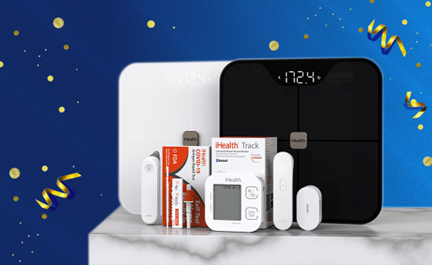The Complexity of Diagnosing Type 1 Diabetes
A type 1 diabetes (T1D) diagnosis can happen suddenly and unexpectedly. The disease is often identified through symptoms that can appear as a cold or flu. While it represents a big life change, people with T1D can live long, full, and happy lives.

How is T1D diagnosed?
T1D often initially presents itself as the flu or illness, but physicians must be quick to spot the telltale signs of a possible T1D diagnosis and order additional tests. There are four tests typically used to diagnose T1D: Fasting glucose, oral glucose tolerance tests, random glucose, and Hemoglobin A1C tests.
Fasting blood-glucose test
This small sample blood test is recommended when they suspect T1D may be present. It is typically conducted in the morning after fasting overnight. The fasting helps give doctors a clear look at how the body manages blood-sugar levels without the impact of food intake.
Oral glucose tolerance test
This test takes the fasting test one step further. After fasting and having an initial blood test, people drink a sugary drink with a designated carbohydrate amount (75 grams) and then have their blood sugar tested over the course of approximately two hours. This shows the fasting blood sugar without outside influences and also measures how the body responds to carbohydrate (sugar) intake. If the result is 200 mg/dl or greater, there is a positive diagnosis for diabetes.
Random blood-glucose test
The quickest option for testing for T1D is a random glucose test. This test simply measures a patient’s current blood sugar regardless of when and what he or she ate most recently. On occasion, this will be the first test, and then doctors will elevate to tests noted above as needed. If the result is greater than 126 mg/dl on 2 separate tests, the diagnosis is diabetes. Another option is to do a random blood sugar reading and if it is 200 mg/dl or greater, diabetes is present.
Glycated hemoglobin (HbA1c) test
The most comprehensive test is the hemoglobin A1c test. This blood test shows the average blood-sugar level for the past two or three months.
The Honeymoon Phase
The onset of diabetes symptoms don’t always happen all at once. During what is known as the “honeymoon phase,” people with T1D can experience a period in which they have no symptoms. The honeymoon phase typically lasts a few months to a year post-diagnosis with the help of some injected insulin, so a patient’s existing beta cells continue to function normally. Eventually, the majority of the insulin-producing beta cells in the pancreas stop making insulin and the diabetes symptoms return. During this time, insulin will likely be necessary at small doses and will need to be increased gradually over time.
What it means for people with T1D
T1D is fairly predictable with regard to endocrine system function during the honeymoon phase, but every case varies just a bit. Paying close attention to the body’s responsiveness to insulin therapy paired with regular blood-sugar testing is crucial to achieve successful management.

Less common T1D tests
Because each case can be as unique as the individual, some doctors may employ the following tests to find markers of T1D to ensure the optimal treatment plan:
- C-Peptide: Measures how much C-peptide is in a person’s blood
- Peptide levels typically mirror insulin levels in the body
- Low levels of C-peptide and insulin can point to T1D
- Very low C-peptide level confirms T1D
- Insulin Autoantibodies (IAA): looks for the antibodies targeting insulin
- Insulinoma-Associated-2 Autoantibodies (IA-2A) finds antibodies mounted against a specific enzyme in beta cells.
- Both the IA-2A and GADA tests are common T1D antibody tests.
- Zinc Transporter 8 (ZnT8Ab) test looks at antibodies targeting an enzyme that is specific to beta cells
- Islet Cell Cytoplasmic Autoantibodies (ICA): Islet cells are clusters of cells in the pancreas that produce hormones, including insulin. This test identifies the type of islet cell antibodies present in up to 80 percent of people with T1D.
- Glutamic Acid Decarboxylase Autoantibodies (GADA or Anti-GAD)
is a test that looks for antibodies built against a specific enzyme in the insulin-producing pancreatic beta cells
How age affects a T1D diagnosis
People with T1D for 15 years or more can often have side effects with diabetic eye disease, kidney, memory, nerve or circulation damage. However, with proper maintenance and routine checkups, these effects can often be limited or avoided altogether.
So from all of us in your Unified Care team, stay safe, and healthy! Remember that using techniques to establish a routine of healthy eating, exercise, and medication and glucose monitoring are the best ways to keep glucose stable and live a long, pleasant, and comfortable lifestyle.
This feature is coming soon
-
March 04, 2024
-
October 10, 2023
-
October 04, 2023
This feature is coming soon
You May Also Like
Title placeholder
posted_date placeholder
Title placeholder
posted_date placeholder
Title placeholder
posted_date placeholder
Title placeholder
posted_date placeholder
Title placeholder
posted_date placeholder
Title placeholder
posted_date placeholder
Title placeholder
posted_date placeholder
Title placeholder
posted_date placeholder
Title placeholder
posted_date placeholder
Title placeholder
posted_date placeholder
Title placeholder
posted_date placeholder
Title placeholder
posted_date placeholder
Title placeholder
posted_date placeholder
Title placeholder
posted_date placeholder
Title placeholder
posted_date placeholder



